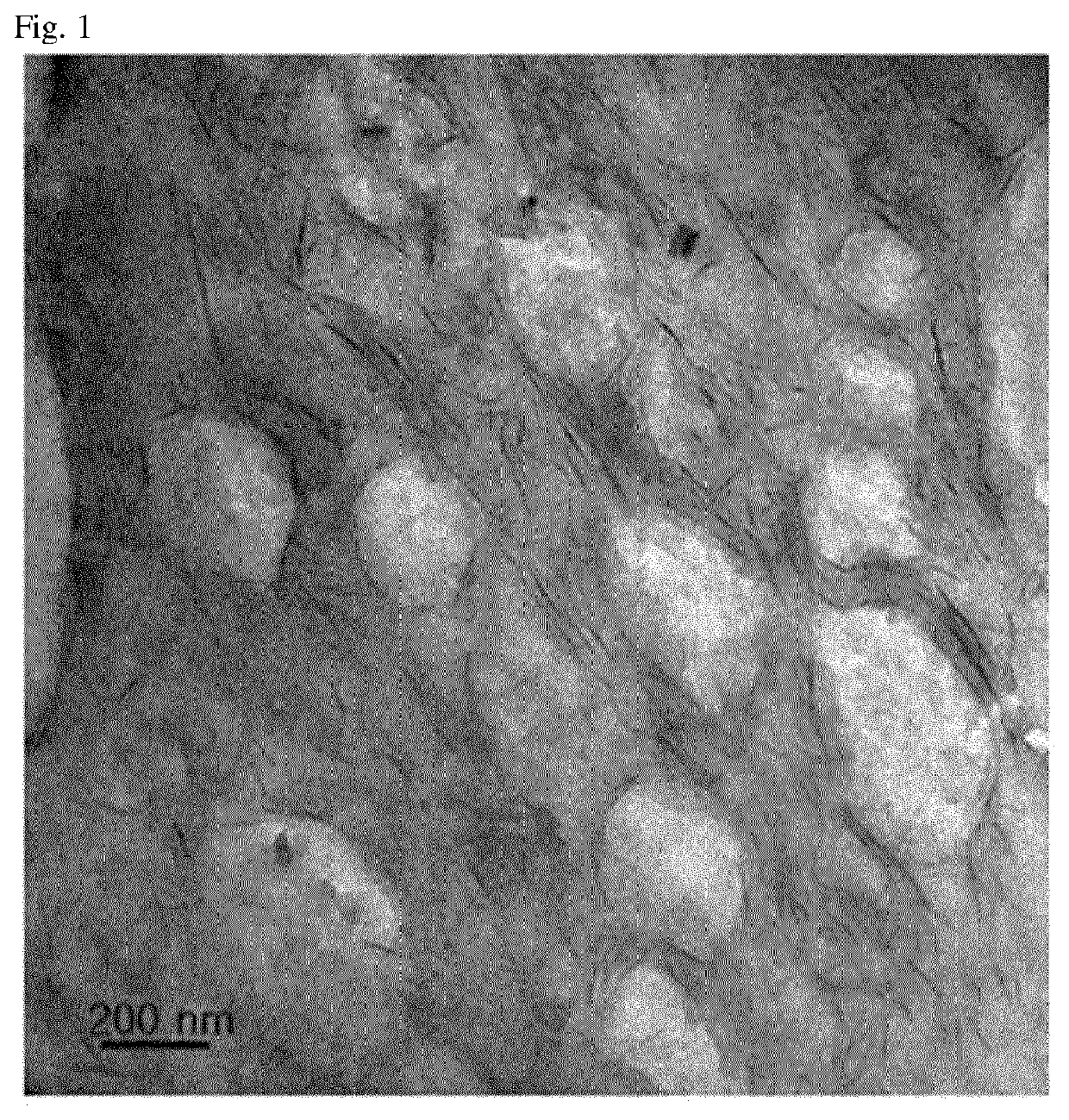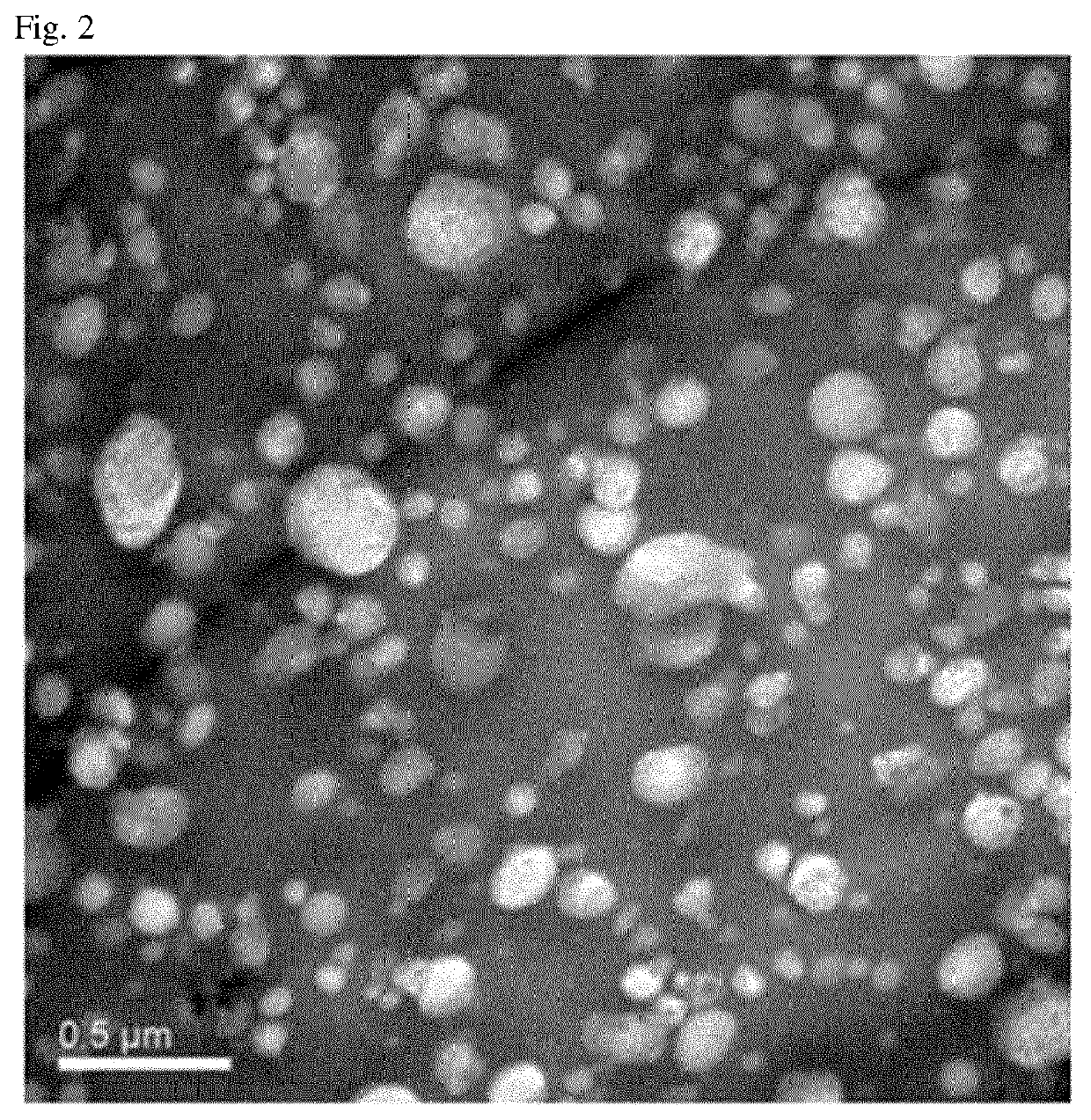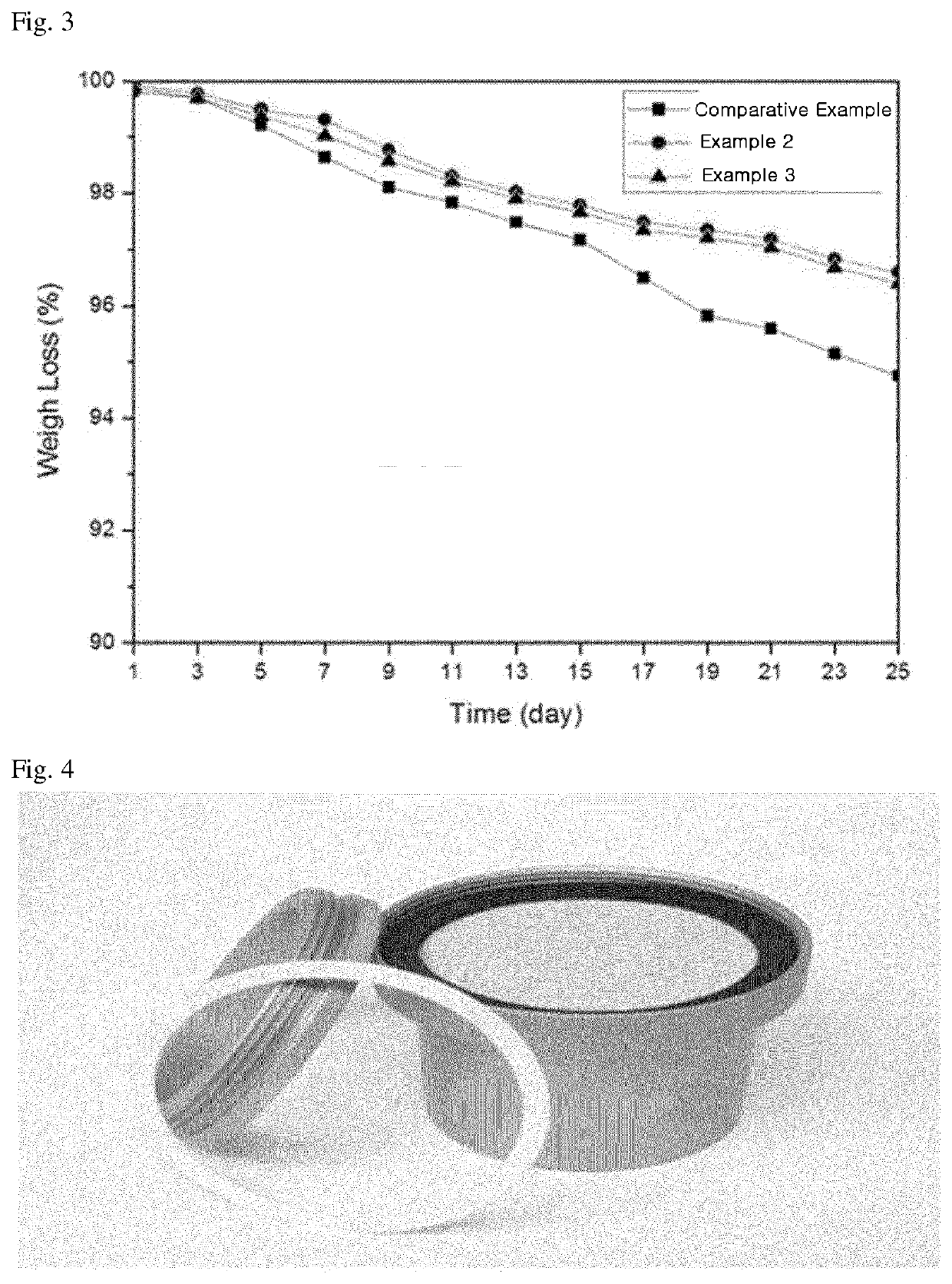Polyamide-based Composite Resin Composition Having Excellent Gas Barrier Property
- Summary
- Abstract
- Description
- Claims
- Application Information
AI Technical Summary
Benefits of technology
Problems solved by technology
Method used
Image
Examples
preparation example
Preparation of Organically Pretreated Mixed Clay
[0069]Montmorillonite and hectorite, in a weight ratio of 1:1 and from which impurities had been removed, were added to water and mixed while stirring at 60° C. to prepare a mixed clay dispersion. The mixed clay dispersion were put into a reaction tank, the pH was adjusted to a range of 4 to 5, then dimethyl hydrogenated-tallow ammonium, which is tertiary ammonium which melts at 60° C., was added in an amount of 90 milliequivalants per 100 g of mixed clay, and the mixture was subjected to an exchange reaction at 60° C. for 20 to 60 minutes while stirring to prepare organically pretreated mixed clay. The organically pretreated mixed clay was selectively separated using a filter apparatus, then dried in a fluid dryer, and pulverized using a milling apparatus to obtain powder having a particle size of 10 to 40 μm.
[0070]Examples 1 to 3>and
[0071]For Examples 1 to 3 and Comparative Examples 1 to 7, components wer...
experimental example 1
[0073]To examine the properties, processabilities, gas barrier properties, and the like of molded articles fabricated using the polyamide-based composite resins prepared according to Examples 1 to 3 and Comparative Examples 1 to 7, the following items were measured, and results thereof are shown in Tables 2 and 3 below and FIGS. 1 and 2.
[0074](1) Tensile strength (MPa): measured at 50 mm / min in accordance with ASTM D638.
[0075](2) Flexural modulus (MPa): measured at 3 mm / min in accordance with ASTM D790.
[0076](3) IZOD impact strength (kJ / m2): measured at a low temperature of −30° C. under a ¼″ notched condition in accordance with ASTM D256.
[0077](4) Heat deflection temperature (° C.): measured while applying a surface pressure of 0.45 MPa in accordance with ASTM D648.
[0078](5) Bending evaluation: The sample was bent back and forth ten times in a bending machine and then evaluated.
[0079](6) Low-temperature drop evaluation: The sample was allowed to stand at a low temperature of −40° C...
experimental example 2
[0088]To examine the permeabilities of molded articles fabricated using the polyamide-based composite resins prepared according to Examples 2 and 3 and Comparative Example 1, E10 fuel was injected, residual fuel permeability was then measured at a chamber temperature of 60° C. in accordance with SAE J2665, and results thereof are shown in FIG. 3. Although residual fuel permeability is generally expressed as weight / thickness / time, no separate indication of thickness was provided in the graph of FIG. 3 because samples having the same thickness were used.
[0089]FIG. 3 illustrates results of measuring residual fuel permeabilities of molded articles fabricated using polyamide-based composite resins prepared according to Examples 2 and 3 and Comparative Example 1.
[0090]As shown in FIG. 3, it can be confirmed that Examples 2 and 3 exhibited further enhanced residual fuel permeability compared to Comparative Example 1. In consideration of this, it is determined that fuel permeability is enha...
PUM
| Property | Measurement | Unit |
|---|---|---|
| Impact strength | aaaaa | aaaaa |
| Mechanical properties | aaaaa | aaaaa |
| Tensile strength | aaaaa | aaaaa |
Abstract
Description
Claims
Application Information
 Login to View More
Login to View More - R&D
- Intellectual Property
- Life Sciences
- Materials
- Tech Scout
- Unparalleled Data Quality
- Higher Quality Content
- 60% Fewer Hallucinations
Browse by: Latest US Patents, China's latest patents, Technical Efficacy Thesaurus, Application Domain, Technology Topic, Popular Technical Reports.
© 2025 PatSnap. All rights reserved.Legal|Privacy policy|Modern Slavery Act Transparency Statement|Sitemap|About US| Contact US: help@patsnap.com



